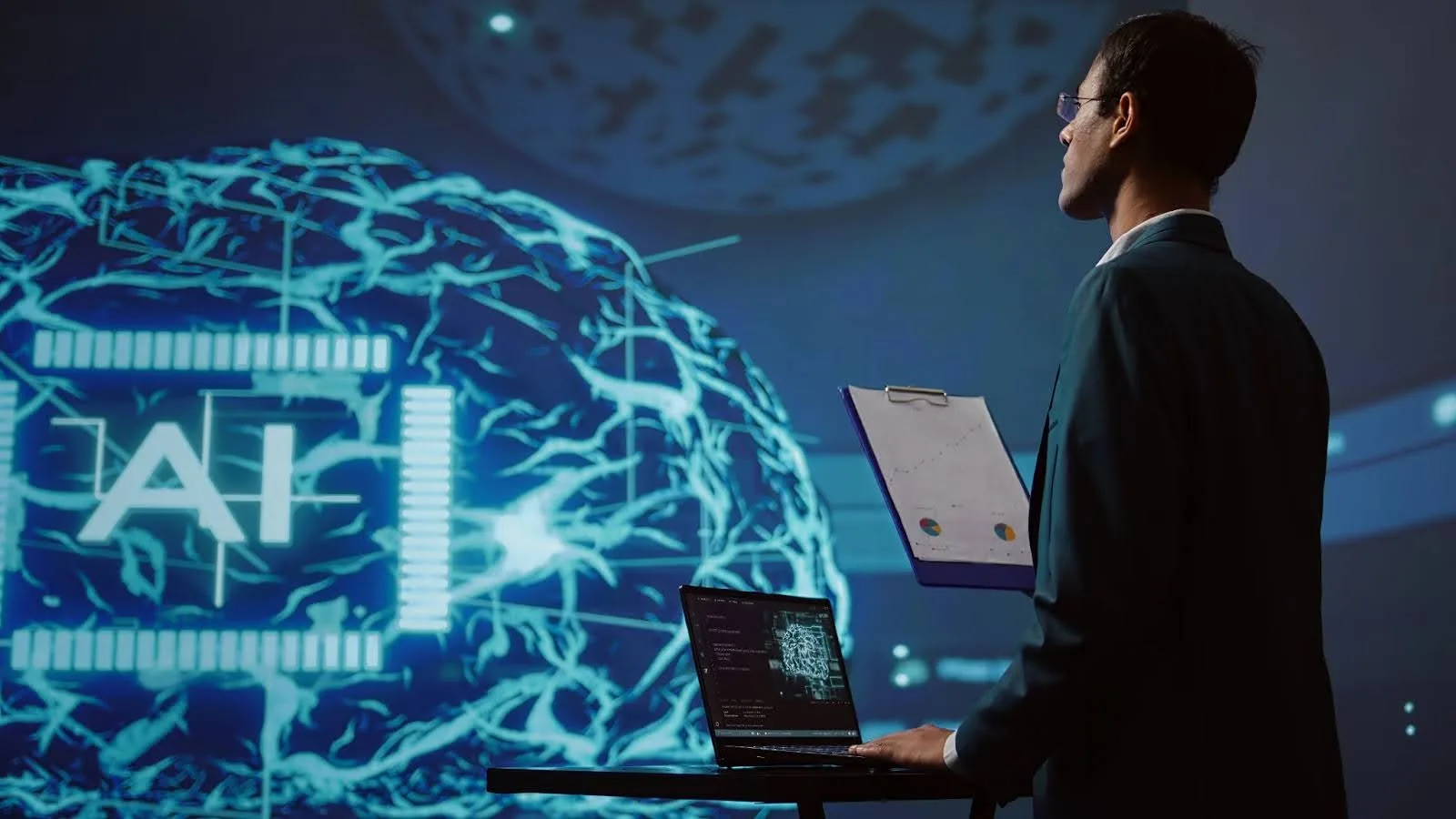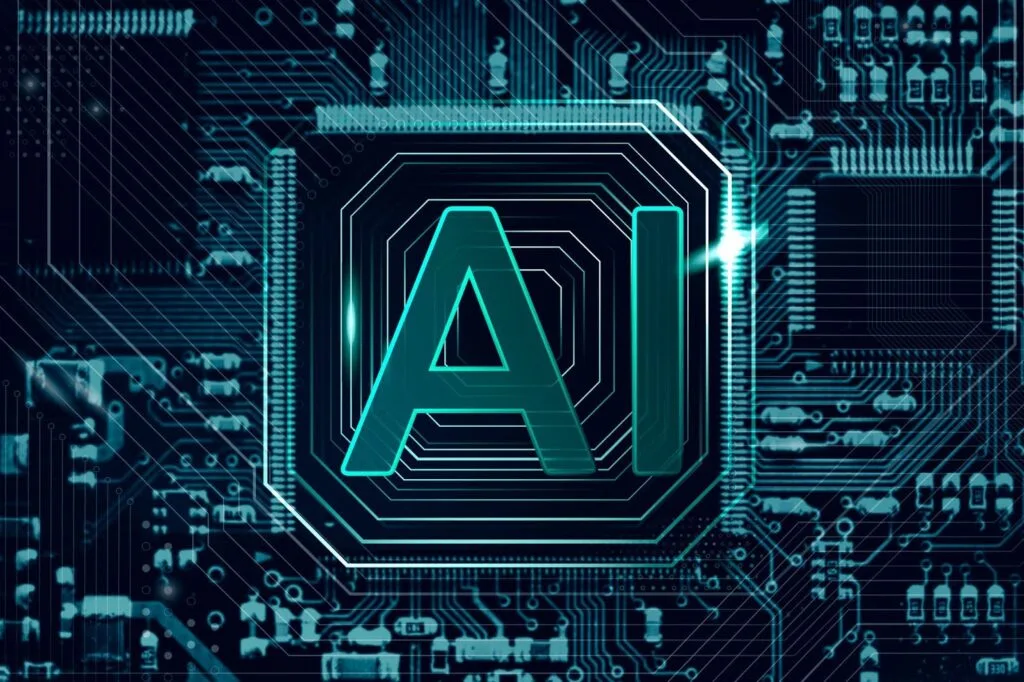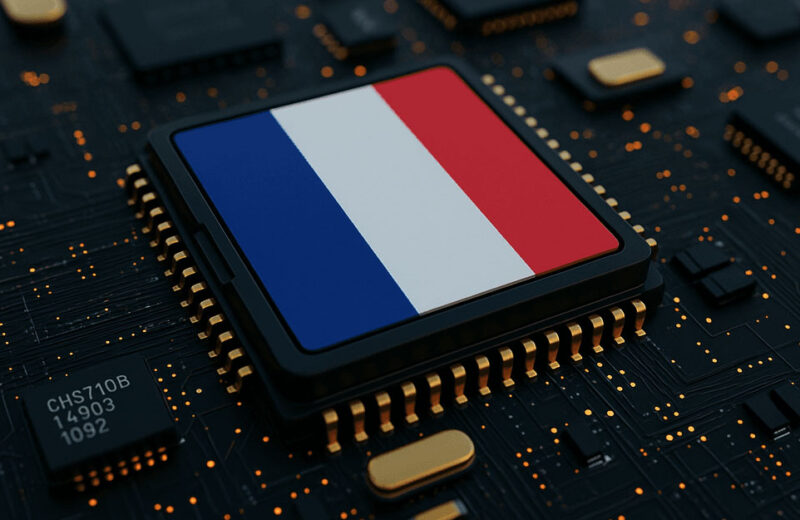Table of content
Generative AI works by using machine learning models to learn patterns from large datasets and create new content based on those patterns. Technologies like transformers and GANs underpin these systems, enabling them to generate text, images, and more.
Quick Summary (TL;DR)
- What it is: AI that creates new content (text, images, code) rather than just analysing data
- How it works: Neural networks learn patterns from massive datasets and generate original outputs
- Key technologies: Transformers, GANs, and foundation models like GPT and DALL-E
- Applications: Content creation, software development, cybersecurity, healthcare, and business automation
Among recent innovations, generative artificial intelligence stands out for its transformative impact. This powerful technology has captured the public imagination and is reshaping industries at an unprecedented pace.
From creating art and writing content to powering advanced cybersecurity solutions and transforming healthcare, generative AI delivers impressive and varied results across multiple sectors.
This comprehensive guide will explore the inner workings of generative AI systems, examine real-world applications, and address common questions about this revolutionary technology.
The Foundations of Generative AI
1. What Is Generative AI?
Generative AI refers to artificial intelligence systems that can create new content—text, images, music, code, and more—that wasn’t explicitly programmed. Unlike traditional AI, which relies on fixed rules to make predictions or classifications, generative models can create entirely new and original content that hasn’t existed before.
2. The Core Principles Behind How Generative AI Works
At its heart, generative AI involves statistical pattern recognition on a massive scale. During training, these systems analyse vast datasets to identify patterns, structures, and relationships within the data. Once trained, they can generate new content that reflects those learned patterns.

The foundation typically involves neural networks—computational systems inspired by the human brain’s architecture. These networks consist of interconnected nodes (neurons) organised in layers that process and transform input data through mathematical operations.
3. Foundation Models in Generative AI
Foundation models are large-scale AI systems trained on diverse datasets that serve as the basis for multiple applications. These models, like GPT (Generative Pre-trained Transformer) for language and DALL-E for images, represent a significant advancement in AI development.
Foundation models work by:
- Pre-training on enormous datasets (often containing billions or trillions of examples)
- Learning general representations of data through self-supervised learning
- Fine-tuning for specific downstream tasks
This approach has revolutionised generative AI by creating versatile systems that can be adapted to numerous purposes rather than building specialised models for each task.
The Training Process
Modern generative AI typically follows these steps:
- Data Collection and Preparation: Assembling diverse, high-quality datasets relevant to the model’s intended purpose
- Pre-training: Exposing the model to massive amounts of data so it can learn patterns and relationships
- Fine-tuning: Refining the model for specific applications or to align with human preferences
- Evaluation and Testing: Assessing performance, identifying biases, and ensuring output quality
This process requires enormous computational resources, which explains why advances in computing hardware, particularly specialised processors like GPUs and TPUs, have been crucial for generative AI development.

Real-World Applications: How Generative AI Works in Practice
Understanding how generative AI works becomes clearer when examining its practical applications across various domains:
1. Content Creation and Creative Work
Generative AI systems can:- Generate human-like text for articles, stories, and marketing copy
- Create original artwork and images based on text descriptions
- Compose music in various styles and genres
- Design new products, fashion items, and architectural concepts


2. Software Development and Coding
In programming, generative AI assists developers by:- Auto-completing code snippets and functions
- Debugging existing code and suggesting improvements
- Generating entire programmes from natural language descriptions
- Translating code between programming languages
3. Cybersecurity Applications
In the critical field of cybersecurity, generative AI applications include:- Simulating potential attack scenarios to identify vulnerabilities
- Generating synthetic security data for training detection systems
- Automatically creating and testing security patches
- Improving threat detection through pattern recognition


4. Healthcare and Drug Discovery
In healthcare, generative AI advances medical research and patient care through:
- Generating potential molecular structures for new pharmaceutical compounds
- Creating synthetic medical data for research while preserving patient privacy
- Assisting in medical image analysis and diagnosis
- Personalising treatment plans based on individual patient data
These examples showcase how generative AI accelerates scientific discovery and improves healthcare outcomes. DeepMind’s AlphaFold represents a breakthrough in protein structure prediction using AI.
5. Business and Enterprise Applications
For businesses, understanding how generative AI works has become essential for maintaining a competitive advantage. Applications include:
- Automating customer service through intelligent chatbots
- Generating personalised marketing content at scale
- Creating financial forecasts and scenario analyses
- Optimising supply chains and inventory management
The enterprise adoption demonstrates how generative AI transforms business operations and decision-making processes. Platforms like Salesforce Einstein and Microsoft Copilot are leading enterprise AI integration. Unlock business transformation with RSVR’s AI-powered solutions — explore our full range of services.

How Does Generative AI Work for Different Media Types?
How Does Generative AI Work for Text?
Text generation models like GPT-4 work by predicting the next word or token in a sequence based on all previous tokens. The process involves:
- Tokenising input text into smaller units (words, subwords, or characters)
- Processing these tokens through multiple transformer layers
- Generating probability distributions over possible following tokens
- Selecting tokens based on these probabilities and various sampling strategies
This approach enables models to produce coherent, contextually appropriate text across numerous domains and styles.
How Does Generative AI Work for Images?
Image generation typically follows one of several approaches:
- Text-to-image models like DALL-E and Midjourney translate textual descriptions into corresponding images
- Style transfer algorithms apply artistic styles to existing images
- GAN-based systems generate entirely new images from random noise
The ability to generate high-quality, original images demonstrates how generative AI understands visual concepts and their relationships to language.

How Does Generative AI Work for Audio and Video?
Audio and video generation involves specialised architectures that account for the temporal dimension of these media types. Systems can:
- Generate realistic speech from text
- Create music in specific genres or artists’ styles
- Synthesise video footage of events that never occurred
- Convert between media types (e.g., describing images in text or generating images from text)
This cross-modal capability highlights how generative AI builds connections between different forms of data representation. ElevenLabs leads in AI voice synthesis, while Runway pioneers AI video generation.
Generative AI vs. Traditional AI
| Aspect | Traditional AI | Generative AI |
|---|---|---|
| Primary function | Classification, prediction | Creation of new content |
| Data requirements | Often works with smaller, structured datasets | Typically requires massive, diverse datasets |
| Architecture | Various (decision trees, simple neural networks, etc.) | Complex neural networks (transformers, GANs, etc.) |
| Output | Discrete predictions or classifications | Novel, original content |
| Human interaction | Often limited to specific inputs and outputs | Can engage in open-ended interactions |
Our Experience with Generative AI
At RSVR Tech, we’ve been at the forefront of generative AI innovation, helping businesses harness the transformative power of AI to revolutionise their operations and user experiences. Our deep expertise spans the entire AI ecosystem, from cutting-edge LLM integrations to sophisticated agentic systems that think, plan, and act autonomously.
Proven Track Record
We’ve delivered measurable results across diverse industries, consistently demonstrating the real-world impact of well-implemented AI solutions:
- 65% reduction in support ticket resolution time through domain-trained chatbots
- 40% increase in product discovery and cart value via AI-powered recommendation engines
- From 3 hours to under 10 minutes – dramatically accelerated proposal creation with sales enablement bots
Comprehensive AI Capabilities
Our generative AI services encompass the full spectrum of modern AI applications:
- LLM Integration: We seamlessly integrate top-tier models like ChatGPT, Claude, Gemini, and open-source LLMs directly into your product workflows, creating smarter, faster, and more human-like digital experiences.
- RAG-Based AI Systems: Transform your data into intelligent 24/7 assistants with our Retrieval-Augmented Generation systems that provide real-time, context-rich answers from your documents, PDFs, product catalogues, CRMs, and more.
- Agentic AI Systems: Go beyond simple chat with AI agents that take multi-step actions, make decisions, and automate complex workflows – essentially your own AI employee operating on autopilot.
- Custom AI Solutions: From recommendation engines to predictive analytics, we build tailored AI models for unique business challenges, including fraud detection, churn prediction, and personalised content delivery.
Enterprise & Consumer Applications
Our expertise spans both B2B and B2C use cases:
- For Enterprise: We’ve built enterprise knowledge assistants, automated customer support systems, sales enablement tools, contract review agents, and internal tooling that bridges platforms like Jira, Notion, and Slack.
- For Consumers: Our work includes personalised recommendation systems, AI-powered learning companions, customer engagement bots, and virtual shopping assistants that enhance user experiences across mobile and web platforms.
Case Study: AI-Powered Art Marketplace
One of our flagship projects demonstrates our ability to create sophisticated AI-driven platforms. We developed an innovative art marketplace that leverages generative AI to transform how users discover, interact with, and purchase art. This project showcases our expertise in combining AI recommendations, natural language processing, and user experience design to create engaging, intelligent platforms.
View our AI Art Marketplace Case Study
Cloud-Native & Secure
We integrate the best AI services from AWS, Azure, and GCP, ensuring your solutions are built on robust, scalable infrastructure. All our AI systems are designed with security, privacy, and ethical considerations at their core, complying with GDPR, HIPAA, SOC2, and other global standards.
Ready to transform your business with generative AI?
Our team of AI experts is ready to help you unlock the full potential of artificial intelligence for your unique use case.
The Future of Generative AI
1. Multimodal Systems
Future generative AI will increasingly work with multiple types of data simultaneously—text, images, audio, video, and more—creating more integrated and versatile applications.2. Human-AI Collaboration
Rather than replacing human creativity, generative AI is enabling new forms of collaboration where AI amplifies human capabilities rather than substituting for them.3. Ethical Considerations and Governance
Key concerns include:- Copyright and intellectual property questions
- Potential for misuse (deepfakes, misinformation)
- Bias and fairness in generated content
- Privacy implications of training data

4. Computational Efficiency
Current generative AI involves enormous computational resources. Future research will focus on making these systems more efficient and accessible.
Conclusion
The question “how does generative AI work?” involves complex interactions between mathematics, computer science, data, and domain knowledge. By exploring fundamental principles and examining real-world applications, we can appreciate both current capabilities and future potential.
As generative AI continues to evolve, it promises to transform how we create, communicate, and solve problems across virtually every industry. Whether you’re a business leader, creative professional, developer, or curious observer, understanding how generative AI works will be increasingly valuable in navigating our AI-enhanced future.
Frequently Asked Questions (FAQs)
How does the generative AI model work?
Generative AI models learn patterns from large datasets and then create new content that follows those patterns. Most modern systems use neural networks, particularly transformers for text and specialised architectures for images and other media types, to capture complex relationships within data and generate novel outputs.
How does generative AI work?
At its core, generative AI works through complex statistical modelling. The system analyses probability distributions within training data to understand what makes content “work” – grammatical text, realistic images, or believable audio. When generating new content, it samples from these learned distributions while following constraints provided by the user’s prompt or input.
How does generative AI work with examples?
Generative AI works with examples by learning from them during training. For instance, a text model trained on books, articles, and websites learns language patterns from these examples. When prompted, it generates new text following similar patterns. Similarly, image models learn visual patterns from millions of images and can create new visuals that reflect these patterns when given descriptive prompts.
What is generative AI?
Generative AI refers to artificial intelligence systems capable of creating new content that wasn’t explicitly programmed, such as text, images, audio, or code. Unlike traditional AI, which classifies or analyses existing data, generative AI produces original outputs based on patterns learned during training.
Is ChatGPT generative AI?
Yes, ChatGPT is a prominent example of generative AI. OpenAI developed it using a large language model to generate human-like text responses based on prompts. It demonstrates how generative AI can engage in open-ended conversations across various topics.
How can generative AI be used in cybersecurity?
Generative AI can be used in cybersecurity to:
- Simulate attack scenarios and identify vulnerabilities
- Generate synthetic security data for training detection systems
- Automatically create and test security patches
- Improve threat detection through pattern recognition
- Generate security reports and automate incident response workflows
What are foundation models in generative AI?
Foundation models in generative AI are large-scale systems trained on diverse datasets that serve as the basis for multiple applications. These models – like GPT for language or DALL-E for images – learn general representations that can be adapted to numerous downstream tasks through fine-tuning or prompting, rather than building specialised models for each purpose.
How does generative AI work for images?
Generative AI works for images through several approaches: diffusion models progressively transform random noise into coherent images; GANs use competing networks to generate realistic visuals; transformers can translate text descriptions into corresponding images; and various specialised architectures can manipulate or enhance existing photos. During training on millions of image examples, these systems learn visual concepts and their relationships.
How does generative AI work for dummies?
Simple explanation: Generative AI learns patterns from existing data (text, images, etc.), builds an internal statistical model of what makes that content “work,” and when given a prompt, uses its model to create new content following similar patterns.
Think of it like a student who has read thousands of books and can now write an essay in a similar style, but on a much larger scale.
How does generative AI work behind the scenes?
At a deeper technical level, generative AI involves:
- Mathematics: Matrix multiplications, probability distributions, and optimisation algorithms
- Computational resources: Processing vast amounts of data through complex neural networks
- Engineering: Efficiently implementing these systems on specialised hardware
- Feedback mechanisms: Continuous improvement through various learning techniques
How does generative AI work with examples?
Text Generation Example: When you ask ChatGPT to write a poem about autumn, it:
- Processes your request to understand the topic and format
- Activates knowledge about poetic structures and autumn-related concepts
- Generates text that combines these elements coherently
- Refines the output to maintain consistency and quality
Image Generation Example: When using DALL-E to create “a surrealist painting of a cat playing chess,” the system:
- Analyses the prompt to identify key elements (cat, chess, surrealist style)
- Activates its understanding of these visual concepts
- Generates an image that combines these elements
- Refines details to ensure the result matches the prompt







